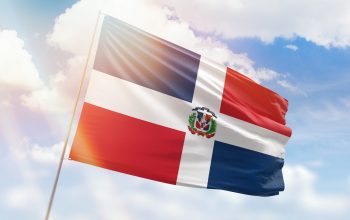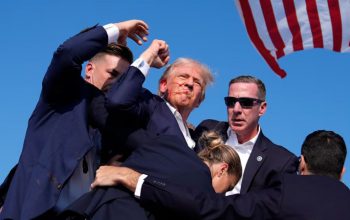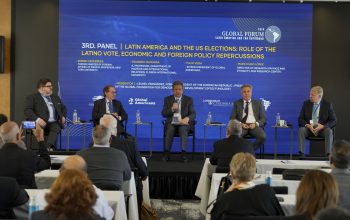news
“The Financial Oligarchy in the Age of Trump”, an article by Dr. Leonel Fernández
February 7, 2017
In response to the global financial crisis of 2007/8, which would become the Great Recession, the administration of president Barack Obama submitted a bill to Congress aimed at regulating the US financial system.
This bill – known as the Dodd-Frank Wall Street Reform and Consumer Protection Act – passed in 2010. With the implementation of this legislation and the application of stimulus policies, the US economy managed to reach a stable
level of recovery in terms of macroeconomic stability, growth, and unemployment reduction.
Now it turns out that president Donald Trump decided, last Friday, February 3, to reverse the financial regulation designed to avoid future crises in the US financial system, and thereby the rest of the world.
It was done by executive order. From there the Republican majority in the Senate and House of Representatives began clamoring for the modification of the
Dodd-Frank Act and a return to the era of financial deregulation – which was the fundamental cause of the Great Recession that continues to wreak havoc in various parts of the world, despite having begun nearly a decade ago.
With Trump’s executive order to return to a bygone era of financial deregulation, not only has the United States’ financial sector (the most heavyweight sector in the country’s economy) consolidated its power, but has
also obtained what it has long sought: political power.
The image of Donald Trump signing his executive order surrounded by big names from the country’s banking sector, stock exchanges, insurance companies, and financial markets has in general been taken as symbolic of how the US financial oligarchy has taken control of the White House.
Global Financialization
Since the
1980s, the financial services sector has grown at a dizzying rate, a trend seen, among other factors, in its relationship with GDP and amount of financial assets.
In 1950, for example, the finance sector made up 2.8% of global GDP. In 1980 it was 4.9%, and by 2006 – the year before the outbreak of the crisis – it had reached 8.3%.
In other words, since 1980, finance grew at a faster rate than in the 30 years prior to that date.
Meanwhile, global financial assets, which include bank deposits, stocks, and public and private debt, have grown to nearly quadruple the size of global GDP. Global capital flows have also increased: by 2007 the total value of global financial assets had reached $194 trillion. They now measure more than $700 million, some 10 times greater than global GDP.
In the United States, since 1980 the total value of financial assets as a percentage of GDP has grown by more
than double the rate of the previous 80 years.
The financial services sector includes credit intermediation, savings and loan associations, and the stock exchanges. The latter, in turn, encompass the subsectors of insurance, pension funds, mutual funds, investment banks, and asset management firms.
Initially the financial services sector was evaluated with respect to commercial bank operations. The banks played an intermediary role between savers and
investors. The banks’ aim was to hold savers’ deposits and facilitate credit to those who needed it for consumption or productive investment.
Over time, though, the nature of banks’ intermediation changed. No longer were they instruments of intermediation, but through investment in financial markets became an end in themselves.
Aiming to avoid bankruptcies like those that took place during the Great Depression that began in
1929, president Franklin Delano Roosevelt signed the 1933 Banking Act (known as the Glass-Steagall Act for its Congressional sponsors), which set up supervisory and regulatory mechanisms for banks, and classified financial institutions as either commercial or investment banks.
For more than 60 years this was the regulatory system governing the US financial sector. But toward the end of the 1970s several industries, including shipping, airlines, and railways, began to be
deregulated with the aim of increasing market competition.
Financial Deregulation
In the banking sector, as a result of the mergers and acquisitions that had taken place since the 1980s, the new megabanks carried out operations that went beyond their traditional deposit and credit functions. The same thing happened with some commercial banks, which also began to do financial transactions with new market instruments.
At the
end of the 1990s, the regulatory system created by FDR was dismembered. It was replaced by the Gramm-Leach-Bliley Act, which deregulated the financial sector.
This deregulation took the form of a loosening of the interest rate and credit controls, privatization of public banking and financial institutions, and deregulation of capital and stock markets.
Banking was internationalized, and accompanied by greater financial interconnection as well as the
ability to buy, sell, securitize, and do stock operations with mortgages and the appearance of new financial instruments like derivatives.
There was also a surge in new financial institutions like hedge funds and private equity and market entry by new institutional investors like insurance companies, pension funds, sovereign wealth funds, and wealth managers.
Thus was born the phenomenon of global financial deregulation, uncontrolled by the state and
allowing more capital, fewer restrictions, and more investment opportunities to flow.
Naturally an important role was played in all this by the technological revolution, which made possible the appearance of electronic money and the carrying out of instant transactions.
Such was the volume of operations in the various areas of finance that this sector began to overshadow other parts of the economy. This in turn gave rise to the financialization of the
economy, consisting of a profound transformation of the global economy system from a model of industrial capitalism to one of financial capitalism, which currently prevails worldwide.
Since the 1980s the financial sector has suffered several crises: the plummeting of the New York Stock Exchange in 1987, the Mexican peso crisis, the Russian ruble crisis, the Brazilian real crisis, the Asian crisis, the dotcom crash, and finally the global financial crisis of 2007/8, whose
aftershocks continue to this day.
It’s clear that the recurring financial crises of the last two decades have resulted from the phenomenon of financialization of the global economy as well as deregulation, from which the financial oligarchy has benefited greatly.
The Dodd-Frank Act was passed precisely to control this situation and avoid future disasters in the global economy. But even in the absence of a full recovery from the last global
financial crisis, president Donald Trump has surprised the world by going against his own campaign promises and beginning a new process of financial deregulation, which will undoubtedly provoke new catastrophes, poverty, and malaise in the global economy, affecting millions of people on a global scale.
But, whether out of ignorance or to favor the most potent economic power known in the history of humanity, this is what president Donald Trump has decided to do. In doing
so he has granted the financial oligarchy a political power of such magnitude as to make them privileged residents of Trump’s White House.
Related Link:
http://leonelfernandez.com/la-oligarquia-financiera-en-la-era-de-trump/






